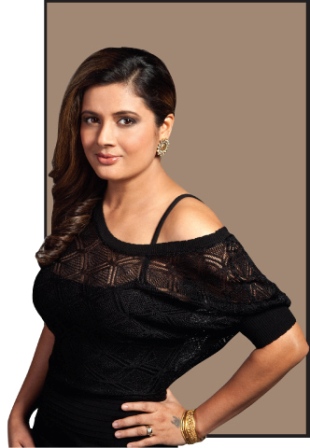The Designing Diva: Reena Ahluwalia
July 24, 11
Award-winning, Indian-born designer Reena Ahluwalia has a unique world view that has made her one of the most sought after designers in the industry. A self-proclaimed quasi-nomad, she is now based in Toronto, Canada.
How and why did you get into the jewelry business?
I grew up in India, in Madhya Pradesh, so there are multiple influences from what I saw around me. When I was growing up, there was always plenty of jewelry around me, but I was also fascinated by materials. What interested me was symbolism, and because I was always interested in materials, I would always be drawing things, and sketching and playing around with whatever came in front of me, whether it was wood, metal or scrap. I was always a very hands-on person. This meant that when I finished school and it was time to choose a field to make a career out of, I was selected to pursue engineering. I always loved chemistry, physics and math, but my heart was not in this area because I was so creative. Rather than becoming an engineer, I applied to a national design college, and was very fortunate to get accepted. That’s where I studied jewelry, art and accessories.
What has your career development been?
After graduation, I worked for a diamond company, one of the largest in India at the time. That was a great place for a beginner because I could sit on the bench and be unafraid to make mistakes and then learn from them. I saw what diamonds were all about, from rough to polished and learnt how they go into jewelry. I also learnt the role of the designer there. I had a great mentor who supported me through my learning.
 Reena Ahluwalia |
After that, I got scholarships and traveled to various other countries and saw how artists in different places worked. It also gave me the chance to see how Asia is different to other places in the world. These things are important because as a designer you are a global thinker.
From there, I had my own company in India and I designed for some key, select diamond clients. In 2000, I won the De Beers Diamonds International Award, which is considered to be one of the most coveted and prestigious awards. That was a time of great transition for me. I had this amazing award and the late, great fashion designer Alexander McQueen put the award-winning piece in the grand finale of his New York debut.
Now I have an independent company. I have private clients around the world so I do a lot of private commissions. At the same time, I work with a very few select dimantaires around the world. I establish collections and narratives for them.
Do you think it is still very much a man’s world?
I think there has been a strong shift. While I feel that it is still dominated by men, in the sense that there are proportionately more men than women, at the same time, there are many more women coming in. In family businesses, it's not only the sons but also the daughters have joined the industry. Proportionately, however, it is still low.
Do you think women face obstacles when joining the industry?
I don’t think so. If I look at my own example, I think it is the skill and the value that you bring to business and people. Your talent matters a lot, so you can be a man or a woman and people are very open to it. There could be some obstacles for females in developing countries, but people are always interested and excited in engaging talented people; people who can add value.
Do you think that jewelry design is a very female profession?
No, I don’t think so. There are amazingly talented designers who are both men and women. At the same time, however, it is great that women have played such a big role in the way that jewelry design has developed in recent years. Their perspective is very important because jewelry is, of course, predominantly worn by women. Women designers do bring a unique perspective.
What has been the high point of your career so far?
I have been honored to have had a few so far. I was thrilled when one of my jewelry creations was featured on a Belgian postage stamp. Another great honor came when the legislative assembly of Ontario and De Beers invited me to work with the very first diamond from Ontario’s first diamond mine, the Victor mine, to design a unique setting to be placed in the historic mace of Ontario. Another high point is working with Royal Asscher on the Stars of Africa initiative, which is very close to my heart. As a designer, I believe in and am committed to using diamonds for development. I want to use diamonds that are ethically mined. In addition, it is important to me to protect the image of diamonds, an industry that employ so many people around the world. So, as a designer, I find myself in a great place to make a difference through my designs.
Which woman do you most admire in the diamond and jewelry industry?
There are so many incredible women that I just wouldn’t feel comfortable singling one out!
Is there anything else you would like to add?
In India, you find a lot of women in the industry, but only in the bigger cities. When you go to the smaller cities, the numbers dwindle. I really think that the diamond and jewelry industry at large needs to engage women. They need to encourage and support them and bring them into important positions. It’s also up to women to work to realize their potential through their skills. Education is so important because it empowers women. When you empower women, you empower children and you empower society at large.